Isotoma axillaris
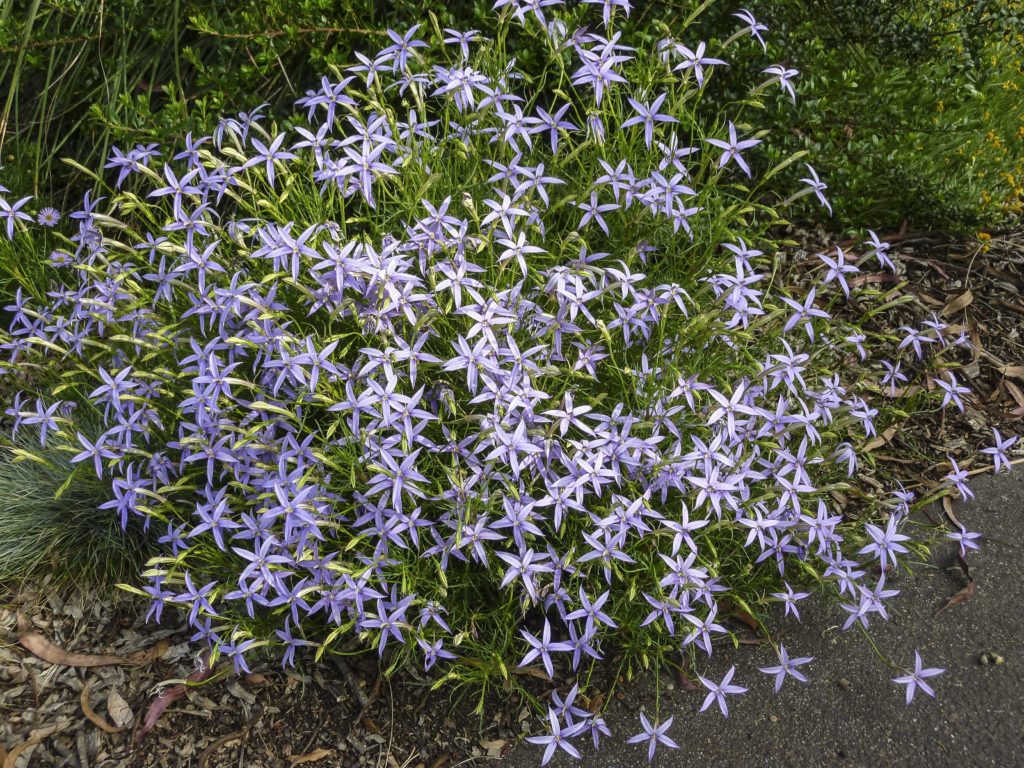
Isotoma axillaris is widespread from Victoria through New South Wales and southern Queensland. It grows naturally in damp crevices or shallow soil in rocky areas. It is a great small plant, growing to about 40 cm high and about that wide, with a prolific display of blue star flowers that are about 3 cm in diameter.
Hibbertia vestita
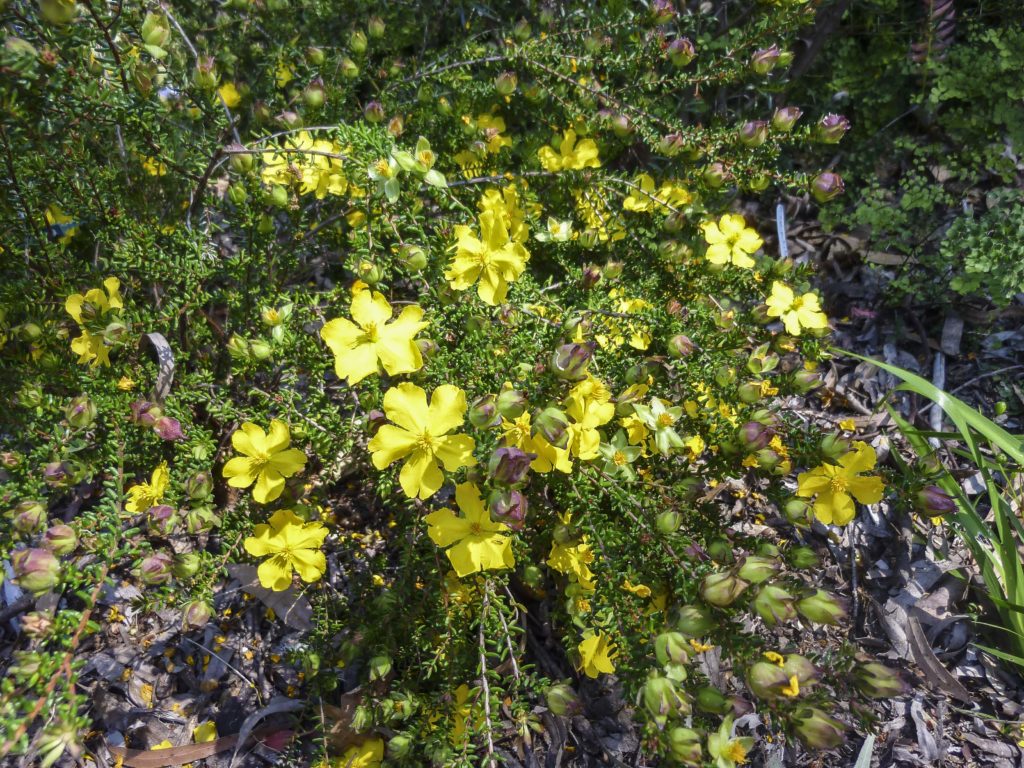
Hibbertias are commonly known as Guinea Flowers, referring to the resemblance of the flower shape and colour to the ancient Golden Guinea coin. They flower best when they receive almost full sun; however plants still flower well with less sun than that. Hibbertia vestita is a fairly long-lived species, adaptable to most situations as long as the soil has good drainage. It appreciates the extra bit of water during dry times.
Grevillea ‘Bedspread’
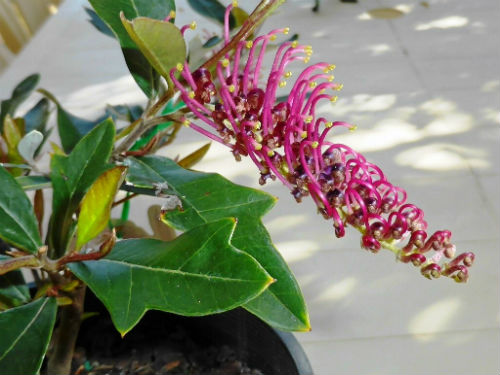
Grevillea ‘Bedspread’ is a hybrid whose parents are said to be Grevillea ‘Royal Mantle’ and Grevillea wilkinsonii a rare species from southern NSW. It is a dense ground cover with a spread of at least two metres. Dark green leaves are ten centimetres long by five centimetres wide and have serrated margins.
Grevillea ‘Allyn Radiance’
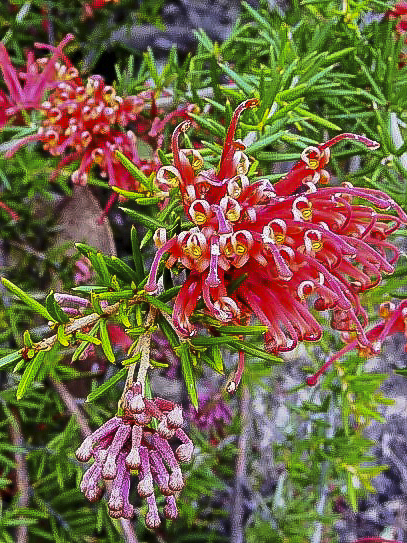
Grevillea ‘Allyn Radiance’ leaves are linear, lanceolate, about 15 millimetres long and crowned with a sharp point. Flowers are dark red and carried in dense clusters. The prominent blooms are carried mainly from July to February with sporadic blooming at other times.
Eryngium ovinum
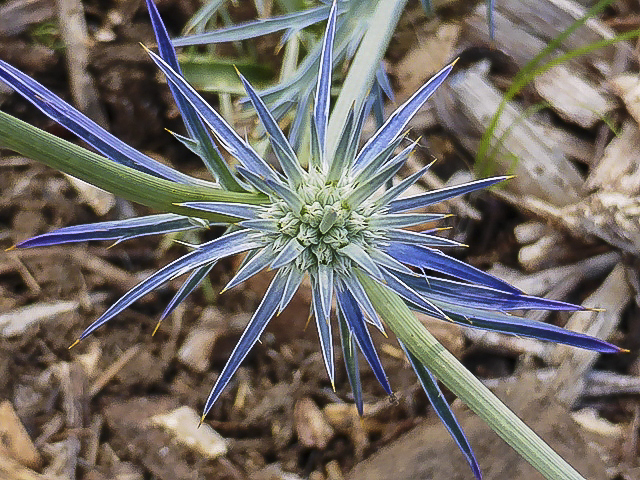
Eryngium ovinum is known as the Blue Devil and is in the Apiaceae family in company with flannel flowers and the carrot. It is a perennial herb, which dies down during autumn and emerges in late winter to flower in summer. Blooms last for many weeks and are an impressive sight with their bright and unusual blue colour.
Eremophila glabra ‘Kalbarri Carpet’
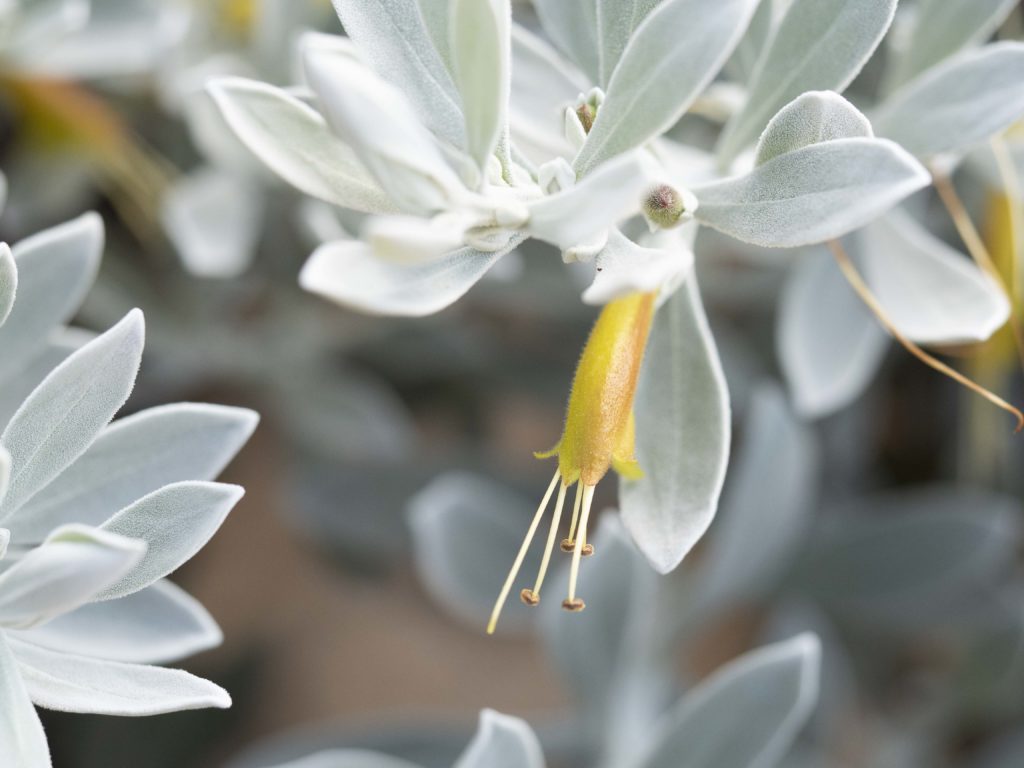
Eremophila glabra ‘Kalbarri Carpet’ develops into a dense ground cover spreading over two metres. Foliage is soft and silvery-grey. The tubular flowers are yellow, rich in nectar and form a ring around the stems at the base of each leaf. Blooms are profuse, conspicuous and appear in spring and summer. The leaves and flowers form a stunning living carpet.
Eremophila debilis
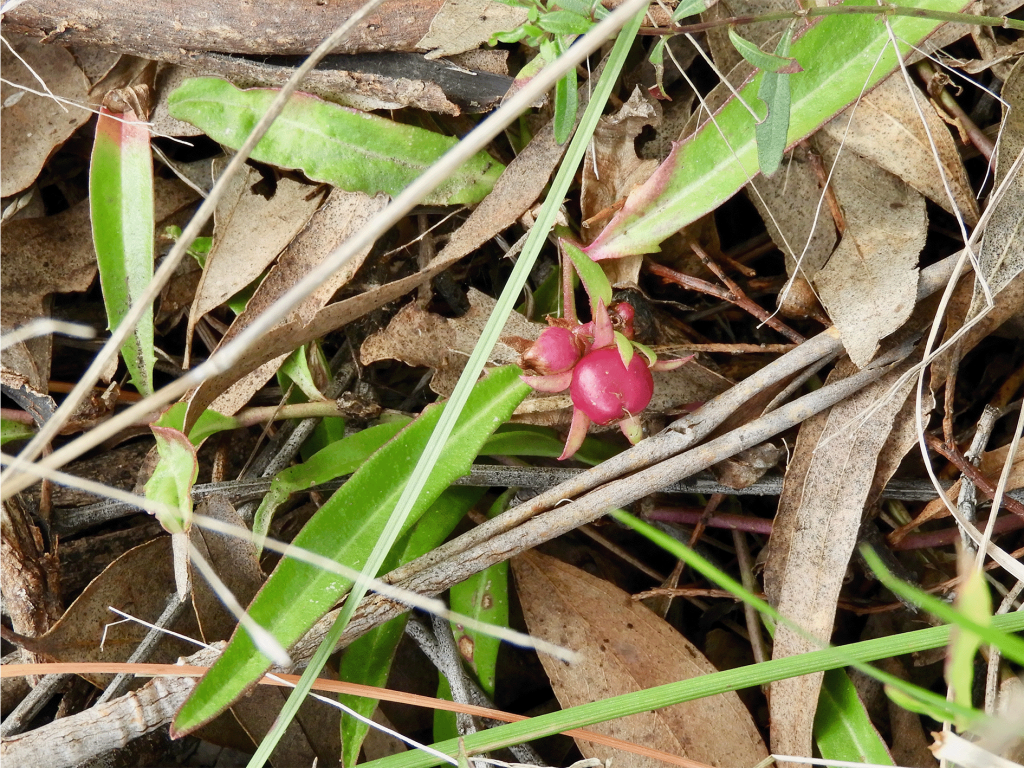
Eremophila debilis, Winter Apple, is a ground cover with a spread of about one metre. Leaves are bright green and tend to curve upwards, with a succulent feel. Five-petalled flowers are white, tinged with lilac and appear in spring and summer. Blooms are followed by small, fleshy fruits that turn purple when ripe and look like miniature apples, hence the common name.
Dampiera stricta
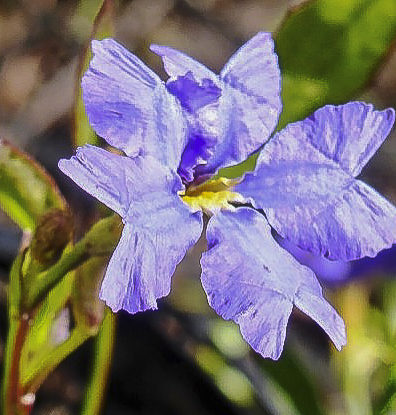
Dampiera stricta is a dwarf, suckering perennial reaching a height of 60 centimetres with a spread of up to one metre. The leaves may be up to 6 centimetres long, two centimetres wide, linear to elliptic in shape and may have a few coarse teeth. The flowers are nearly three centimetres across, sky-blue to deep mauve-blue.
Correa ‘Autumn Blaze’
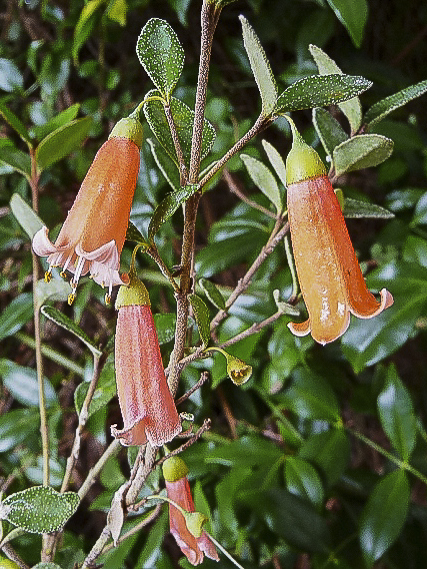
Correa ‘Autumn Blaze’ is a form of Correa pulchella selected in the wild from a population on Kangaroo Island, South Australia. It is small and compact, growing to a height of about 30 centimetres with a spread of 1.5 metres. Leaves are glossy, mid-green above and paler beneath. The orange flowers are the outstanding feature of this cultivar.
Coronidium elatum
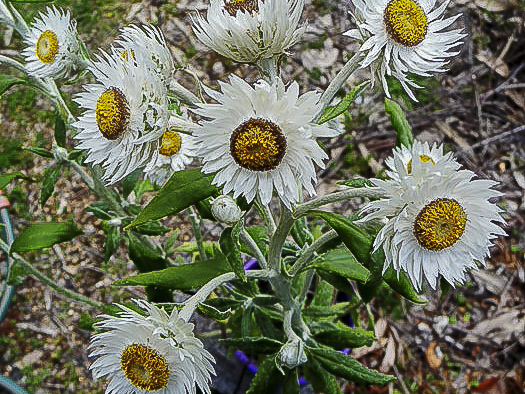
Coronidium elatum is a perennial that may reach a height of two metres. Both stems and leaves are covered with white hairs, giving plants a woolly appearance. Leaves are lanceolate and up to ten centimetres long. Papery white flower-heads up to four centimetres across appear in spring.
Conostylis aculeata
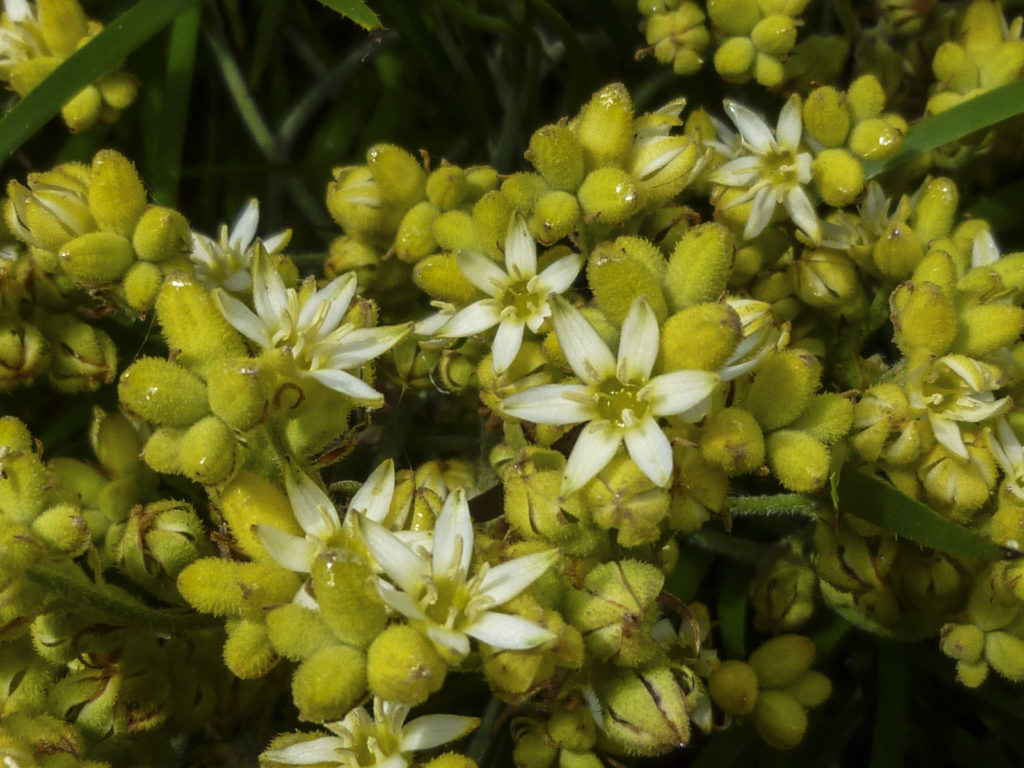
The Conostylis genus is endemic to Western Australia and is found mostly in the south west corner of that state where they generally grow in well drained sandy soil. There are some 45 species and are all perennial, tufted herbs and are closely related to the Kangaroo Paws. It is a very adaptable plant and a great ground cover.
Chrysocephalum apiculatum
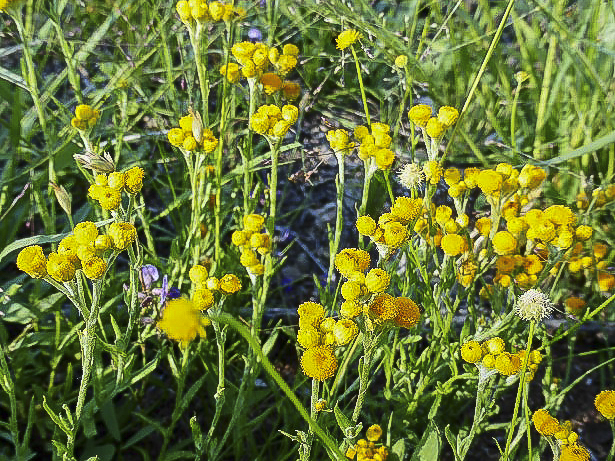
Chrysocephalum apiculatum, the Common Everlasting, is a perennial herb which is found throughout Australia in a wide range of environments. Because it has such a wide distribution there is considerable variation in height, growth habit and leaf colour. The profuse yellow flowers make it a popular groundcover.
Calotis cuneifolia
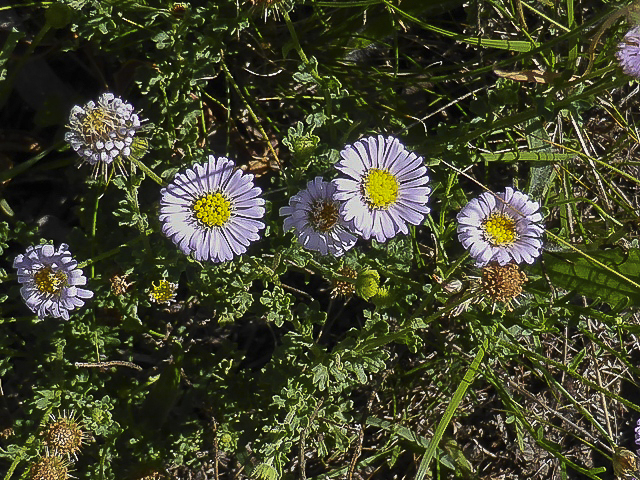
Calotis cuneifolia is a member of the Asteraceae (Daisy) family. The genus is usually known as Burr Daisies. It is a dwarf, rounded perennial, with white or lilac daisy flower heads and small wedge-shaped leaves (cuneate, hence the species name).
Brachyscome multifida
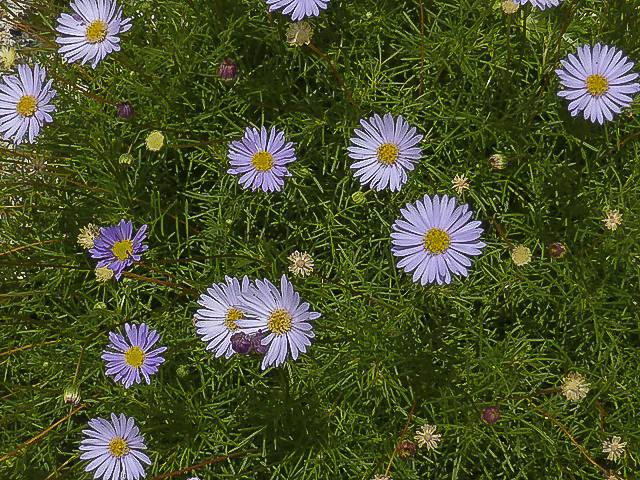
Brachyscome multifida, the Cut-leaf Daisy, is a hardy and colourful perennial. It develops into a dense, ground covering mound reaching a height of 30 centimetres with a diameter approaching a metre. Foliage is light green. In spring and summer plants are covered with mauve-pink flowers. A great groundcover or edging plant in the garden.
